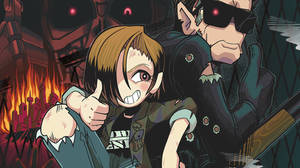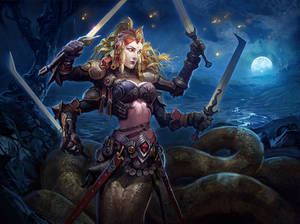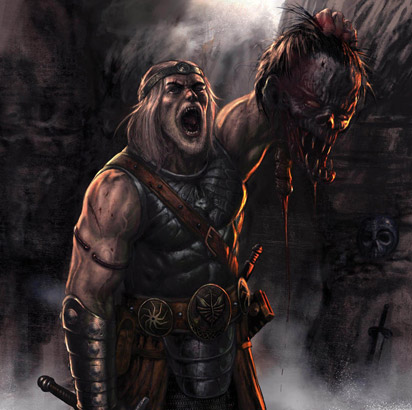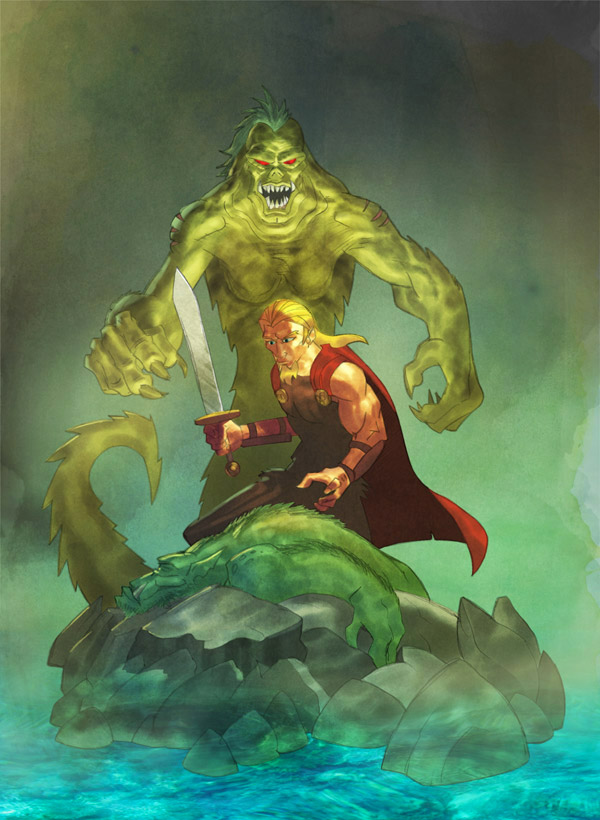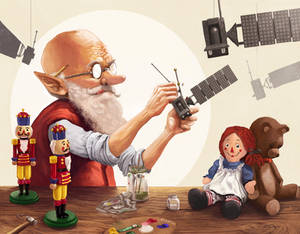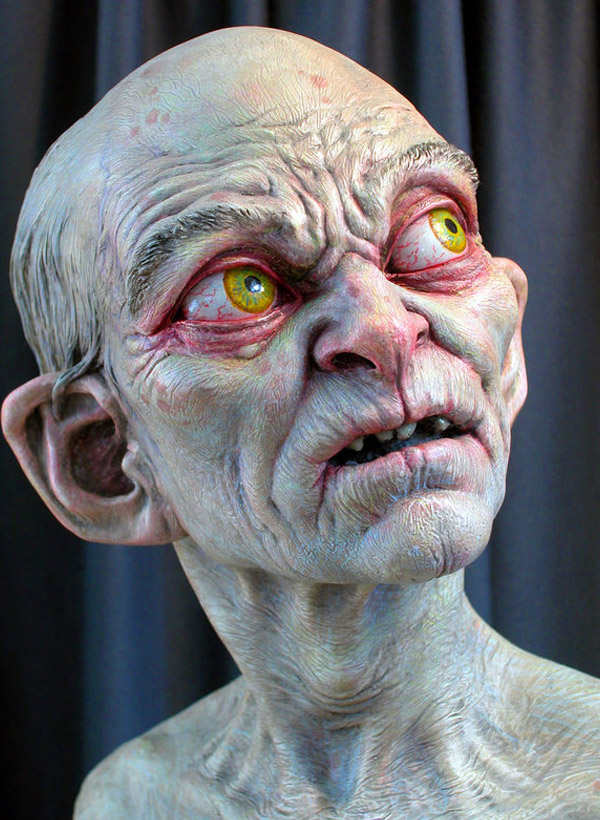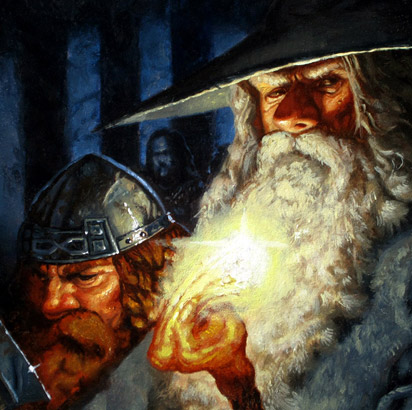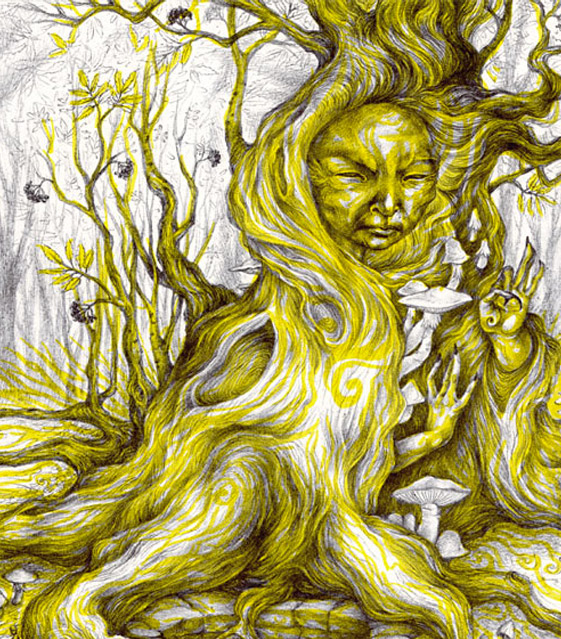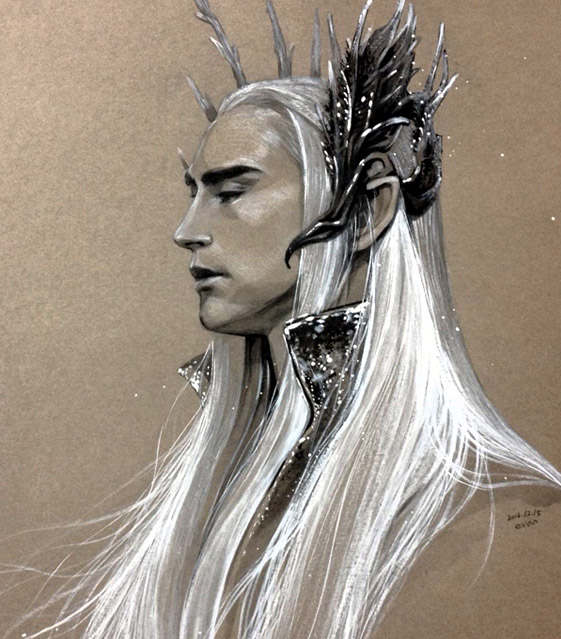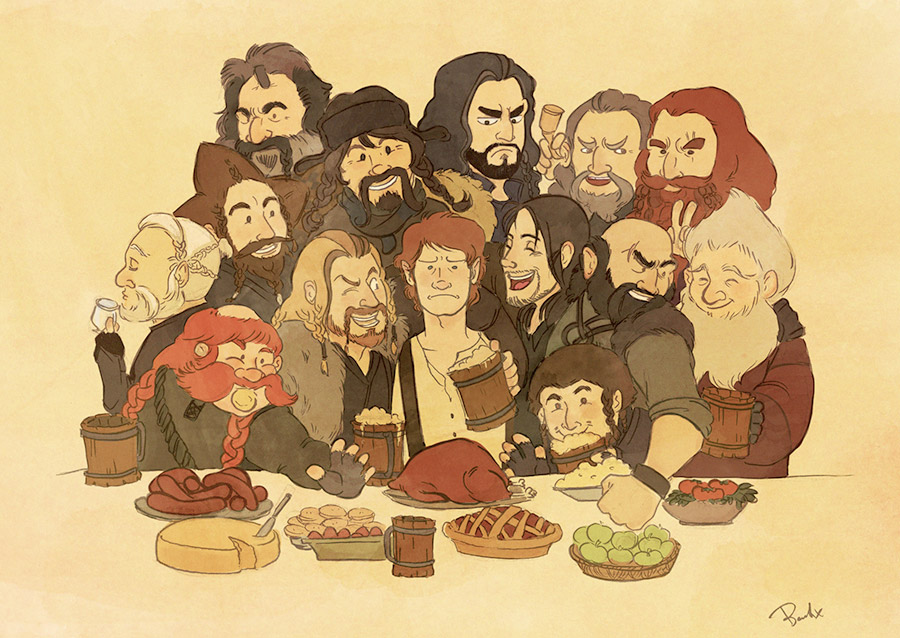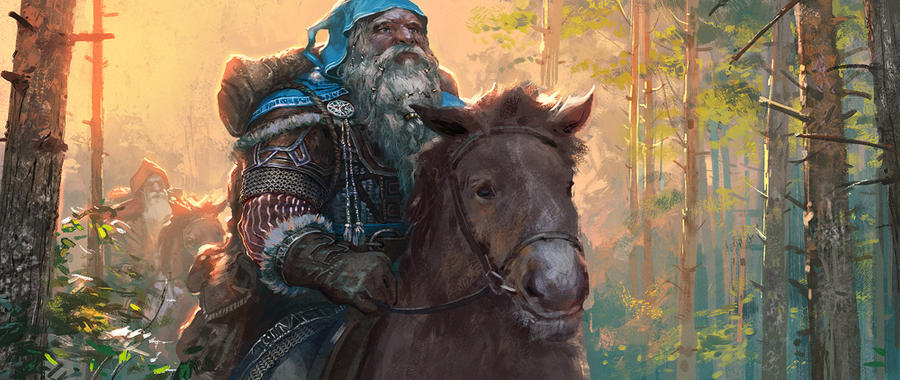

Forewordby techgnotic
Please welcome J.R.R. Tolkien expert and TheOneRing.net producer/writer Cliff Broadway (aka theoneringnet) as he shares his take on the man behind the beloved series of books. Cliff helped build The One Ring.net, a fan-based site created and run by volunteers from around the world and the largest web portal for a single fandom, after working for Sir Ian McKellen(Gandalf) on his website. He has been traveling to New Zealand to cover both the original Lord Of The Rings trilogy and the new The Hobbit trilogy and has also been representing the site at San Diego Comic-Con to standing room only packed halls for 15 years straight.
It is only fitting that now that the last of The Hobbit films are out we take a moment to focus on the man behind the words, J. R. R. Tolkien.
By Cliff Broadway (aka theoneringnet)
To have an appreciation of the wondrous works of J.R.R. Tolkien you'll find no better place to start than the word Philology.
It cannot be used only to refer to academic-types who I imagine stuffed up in an ancient library filled with leathery old volumes and yellowed pages of long-dead Latin or somesuch. Such a dismissive idea doesn't do justice to what philology is really all about. The dictionary definition means: the study of language in written historical sources (the older the better); a combination of history, linguistics and literary criticism. Imagine the mighty blending of these things in one intellect—such that a person so perceptive would know words better than the author who was using them; tracing them back to ancient times long before modern use would accept them as genuine words at all. It's kind of fascinating, really.
Tolkien, or as he is referred to by hardcore fans, "the Professor," was a master of pursuing the history and ultimate genesis of all things that come out of English-speaking mouths. Every word has a source, and Ronald Tolkien knew them. Better than that, he could tell you the hidden meanings behind vowel sounds placed against certain consonants; and after illuminating all that he would want to spin a delightful imagined tale around the music of the words themselves. He was just that kind of mind.
He didn't know that he would become a noted philologist or the creator of a beloved series of books that featured Hobbits, Elves, Dwarves, Men, Wizards, and great Dragons, leaving a huge imprint on the world at large; but his mother Mabel Tolkien surely knew his gifts were strong when he was a wee lad. Wind the clock back to 1894. Mabel has moved her two young boys, Ronald (only age 4) and younger Hilary away from their birthplace of South Africa and back to good old England, over concerns the harsh climate would not be suitable for them. Even at this age, young Tolkien can fully read beyond his level. Mabel took notice of how fast he digested books and was thrilled he learned rudimentary Latin at that tender age. He generally took a strong fascination in learning, reciting, and absorbing words. She taught him some French, but he didn't like it as much - for no other reason than he disliked the sounds, the phonetics of it. His biographer Humphrey Carpenter tells us that Tolkien, as a child, was affected with the love of words, "as interested in the sounds and shapes of the words as in their meanings, and [his mother] began to realize that he had a special aptitude for language." Most other boys that age are interested in frogs and building forts in the woods. Ronald wanted to invent imaginary secret languages with his cousin. Tellingly, our young creator of Middle-earth-yet-to-come was more fascinated by the Welsh words written on the sides of train cars passing by: Nantyglo, Penrhiwceiber, and Senghenydd. You never know where a young intellect will lean when it is nourished early on.
Later moved to the scenic greenery of the Sarehole township, the boy's mind was filled with local color of a very British Midlands type. He walked past Shire-like hills and meadows that he saw blighted with black buildings and mills and brick edifices solidly appearing in the sky (such as Perrott's Folly and Edgbaston Waterworks, the original Two Towers). This contrast in landscape and witnessing the encroachment of industry would become fertile stuff in his mind for future stories. Figure in the fact his favorite books included George MacDonald's "Curdie" series of books "which were set in a remote kingdom where misshapen and malevolent goblins lurked beneath the mountains," the Arthurian legends, and most of all the "Red Fairy Book" by Andrew Lang. In the back pages Tolkien found the tale of Sigurd and how he slew the mighty dragon Fafnir: "a strange and powerful tale set in the nameless North." He was a child so moved by his imagination that the effort to create his own dragons came immediately. His mother heard him recite a story once and corrected his grammar, explaining: "One could not say 'a green great dragon,' but had to say 'a great green dragon.'" This stuck in his head and Tolkien admits he did not try to write another childhood story for many years after, but instead "was taken up with language."
Remember that bit about the English words "cellar door" being the most "beautiful" of our entire language?
That came from early references by Tolkien and others, making a cultural linguistic statement, about the phonaesthetics of our own speech. Much later in life the Professor would say: "Most English-speaking people... will admit that cellar door is 'beautiful,' especially if dissociated from its sense (and from its spelling). More beautiful than, say, sky, and far more beautiful than beautiful." And much later he would add:
Supposing you say some quite ordinary words to me, ‘cellar door,’ say... From that, I might think of a name ‘Selador,’ and from that a character, a situation begins to grow.”
This is the main insight we have into Tolkien's creative process. Words equal music. Form and function of such words matter much less than the melody they make when strung together. In 1900 Tolkien went to King Edwards School and fell under the tutelage of a brilliant and well known classical professor who encouraged him to pursue studies in ancient Greek and Latin. His headmaster had the foresight to show Tolkien copy of BEOWULF. The direction Tolkien later took when he advanced on a scholarship to Oxford was towards Anglo-Saxon (what would develop into English), Old Gothic German stories and the gob-smacking influence of the Finnish epic KALEVALA, and certainly the Icelandic EDDAS. The great poetry of the past was a treasure trove of phonetic glory, Tolkien's greatest playground of discovery. By 1915 he had achieved a degree of complexity in a new language he created as "a mad hobby." Thus were forged the first bits of Sindarin, his language for a majestic race (that would become the Noldor—the Elves) complete with his own alphabet system. Finnish was the strongest influence on this graceful word-craft. There was Quenya, too, the "high Latin" version of Elvish.
As we now know, Tolkien had been inventing these languages based on the music of words, as he investigated the traces of Welsh and Middle English, yet there was no geographic world in which this tongue could be spoken. Not yet, anyway. As Carpenter so adroitly says in Tolkien's official biography:
The more he worked on it the more he felt that it needed a 'history' to support it. In other words, you cannot have a language without a race of people to speak it. He was perfecting the language; now he had to decide to whom it belonged."
World War I nearly destroyed Tolkien—it certainly killed all of his close friends.
It was one thing to pursue his boyish bookworm passions, it was another to dodge mustard gas bombs that the Germans were sending over his head in the Battle of the Somme. Tolkien remained uninjured while so many died around him. Trench fever was what saved our young scholar in the end. Tolkien was granted medical leave from the battlefields of France. While healing in hospital back in England, his new bride, Edith Bratt, would sit at his bedside and listen to his first verses mentioning a place in his later masterpiece, "Gondolin," and a central character, "Eärendil the Mariner," who carries a star across the sky. A full career was awaiting him in Oxford back home (actually starting at Leeds) and his mind was swimming with linguistic possibilities, his ebullient love of stories well-told, and the spectre of warfare. This combination would drive Tolkien to create a mythological world, out of pure instinct, where all these factors would congeal into a new literary sub-creation. This effort would become his life-long spinning of a grand story, perhaps the greatest yarn of the 20th century.
I, among many Ringer fans, often wonder what it was like for Tolkien as he sat down to pen "The Hobbit" or "The Lord of the Rings."
His grasp of myth and its essential elements was keen yet it seems the impetus for his undertaking was not deliberate. Tolkien himself makes it sound as if his creative process was uniformly unguided, unforeseen, and free-flowing. He was an accidental tourist in Middle-earth, just as wide-eyed at its discovery as any reader first exploring the green lands of Eriador and the windswept Wilderlands. But it dawned upon him: this was an ideal place within which to set his Sindarin-speaking immortal beings, the Elves, and those most earthy of adventurers, Hobbits.
The opening salvo that started it all is in Bartlett's Familiar Quotations right alongside Churchill, Ghandi, and Jesus. The oft-quoted story about how this came about is found in Tolkien's published "Letters" No. 163, to W.H. Auden:
All I remember about the start of "The Hobbit" is sitting correcting School Certificate papers in the everlasting weariness of that annual task forced on impecunious academics with children. On a blank leaf I scrawled: 'In a hole in the ground there lived a hobbit.' I did not and do not know why. I did nothing about it, for a long time, and for some years I got no further than the production of Thror's Map.”
You've seen that Map as an important illustration or color fold-out in every edition of the book since it was first published. In his Biography Tolkien says his most casual approach to producing a first draft allowed his mind to wander:
Names always generate a story in my mind; eventually I thought I'd better find out what hobbits were like ... Later on ... I thought this was just too good to leave just on the back of an examination [paper]... I wrote the first chapter first -- then I forgot about it, then I wrote another part. I myself can still see the gaps... I really didn't know how to go on ... I just spun a yarn out of any elements in my head: I don't remember organizing the thing at all.”
And this most revealing comment from his Letters:
Always I had the sense of recording what was already ‘there,’ somewhere; not of ‘inventing.’”
He was glad to not feel rushed by any deadline, self-imposed or otherwise. His mind, the very mind that concocted a Selador out of melodious everyday words, was weaving languages and mythical histories side by side into this nascent Middle-earth. Tolkien had four children, with whom he sat and told rousing bedtime stories featuring the hobbit Bilbo Baggins, and thus had a chance to devise wild tangents and improvised episodes. He was figuring out what worked (and what didn't) with the story he so innocently started. Tolkien assumed the role of a storyteller Bard-On-A-Test-Drive. He was also famous for delivering Beowulf lectures at Oxford with a booming voice and flair.
Funny as it may seem when looking back to 1937, but the Professor certainly could not know his "Hobbit" would be the ideal place to set a future 1200-page epic saga—he had no clue any such demand for his work would arise. But the Dwarves, Elves, Men, and dark Enemies of his earliest poetry and wanderings in linguistics, the preoccupations of his teens and early 20's, would be ideally fit in Bilbo's new universe. So he grafted them together. He admits in Letter No. 163: "I did not know as I began it that it belonged. But it proved to be the discovery of the completion of the whole... As the high Legends of the beginning are supposed to look at things through Elvish minds, so the middle tale of the Hobbit takes a virtually human point of view—and the last tale blends them."
Supported by a mighty clique of writers and essayists (many within the academic world as Tolkien was), our fearless Professor shared his draft manuscripts with those calling themselves The Inklings. The very familiar C.S. Lewis ("Chronicles of Narnia") was among them, also being Tolkien's closest friend and literary ally; and also Warnie Lewis, R.E. Howard, and the famous novelist Charles Williams (who also worked for the Oxford newspaper). Nestled within their favorite local pub, the Eagle & Child, theirs was a merry gathering similar nearly every night where they could trade barbs and scholarly laughter over what the others were writing. Still considered the best writer's support circle of all time, this Entmoot of linguistic pros and flourishing writers was the absolute best place for Tolkien to find support.
I am continually surprised at this idea of Tolkien being a mere pilgrim in a lone-land; the quiet observer of an unfolding world; albeit one with the greatest cranium power I've ever known among writers of speculative fiction.
Every place, every history, river, creature and family name Tolkien invented in his lifelong pursuit of glossopoeia, the invention of languages, was fueled with resonance and ancient meaning. Each term was smartly placed to cast mood and color within his narrative. "Mordor," "Gil-Galad," "Rohirrim," "Sackville-Baggins"—all evocative words that provided their own stories as the languages advanced! His uncanny knowledge of the oldest roots of English (and the tragic heroic legends that we have remaining) informed his every invention. Tolkien wanted to wander in his imagination, loose and free, because it was the most satisfying place for his great passions to bear fruit. Tolkien's mind was the perfect storm of mythic aspirations and laboriously invented languages. He was untethered and happy to write down anything he discovered as the tale-telling progressed.
It took him upwards of 15 years to complete the manuscript for "The Lord of the Rings," the groundbreaking novel that would change the publishing world and irreversibly set a course for high Fantasy in the modern sphere.
That was how slowly and ponderously Tolkien labored over his work; and yet he would never stop going back to change and revise things when his imagination discovered another connection to his own internal linguistic forms.
J.R.R. Tolkien died in 1973 at the age of 81 with the mightiest and surely the most essential of his legends unfinished—"The Silmarillion." He was heartbroken that no publisher would take it, regardless of the smashing success of his later years with the "Rings" trilogy. It was a hulking symphony of mythical pre-history that grounded all of Middle-earth's poems and tales together with one cosmology, and not surprisingly it includes a creation myth based on music and harmonies among angelic beings. His love for sounds and language and songs were at the kernel of every pen-stroke he committed to paper. When it comes to hobbits, the philologist wins out over all.
Middle-earth was the great beneficiary of this man's learned passion. And we, of course, are the ongoing generations of readers still enthralled with his linguistic spell.
Gallery
Your Thoughts
- Have you read “The Hobbit” and the “Rings” trilogy? What did (or did not) attract you to immersing yourself in Tolkien’s life-long labor of love?
- For “Rings” non-readers: Did seeing any or all of the “Lord of the Rings” movies make you want to seek out and experience reading the original books?
- For “Rings” readers: Did you think the movies were superior to the novels, or vice versa? Or you do you think both are superior examples exemplifying the strengths of their separate, different media?
- Tolkien has been criticized for positing a world in which a really white race of good guys (Elves) must defend against the encroachments of dark-skinned bad guys (Orcs). It has been suggested that Tolkien’s fiction betrayed his (perhaps entirely subconscious) affinity for the waning British Empire’s elitism, if not downright racism. Is this a fair criticism? Should storytellers always be sensitive to what unintended messages might be getting read into their tales? Or is that a form of “self-censorship?”










